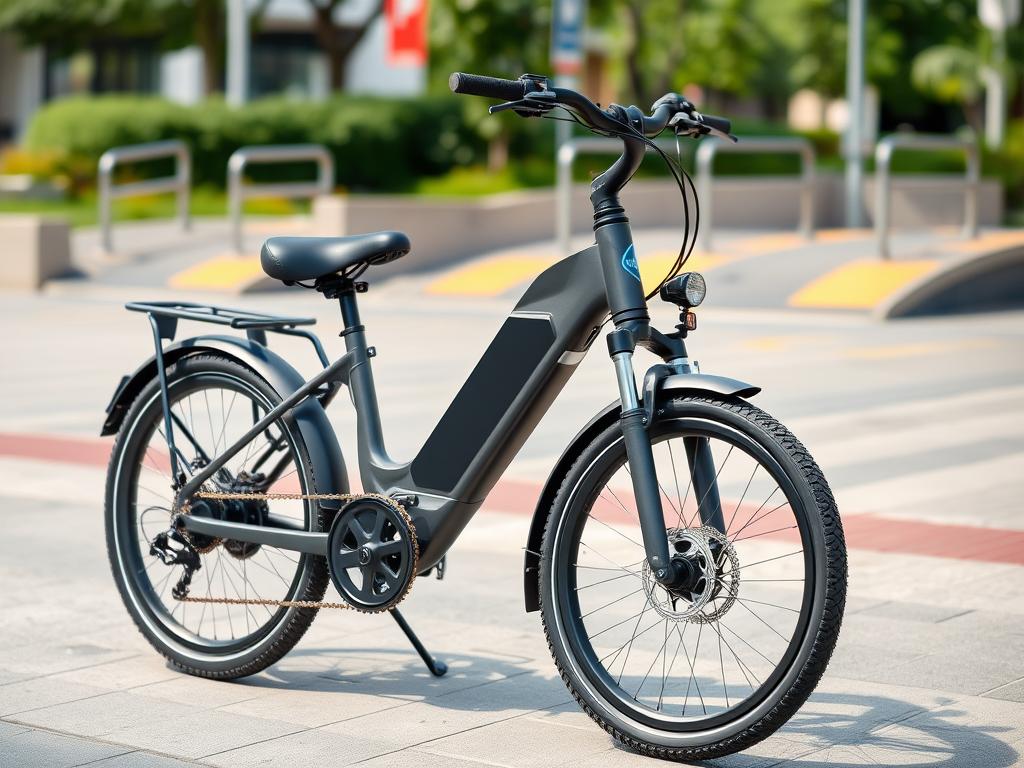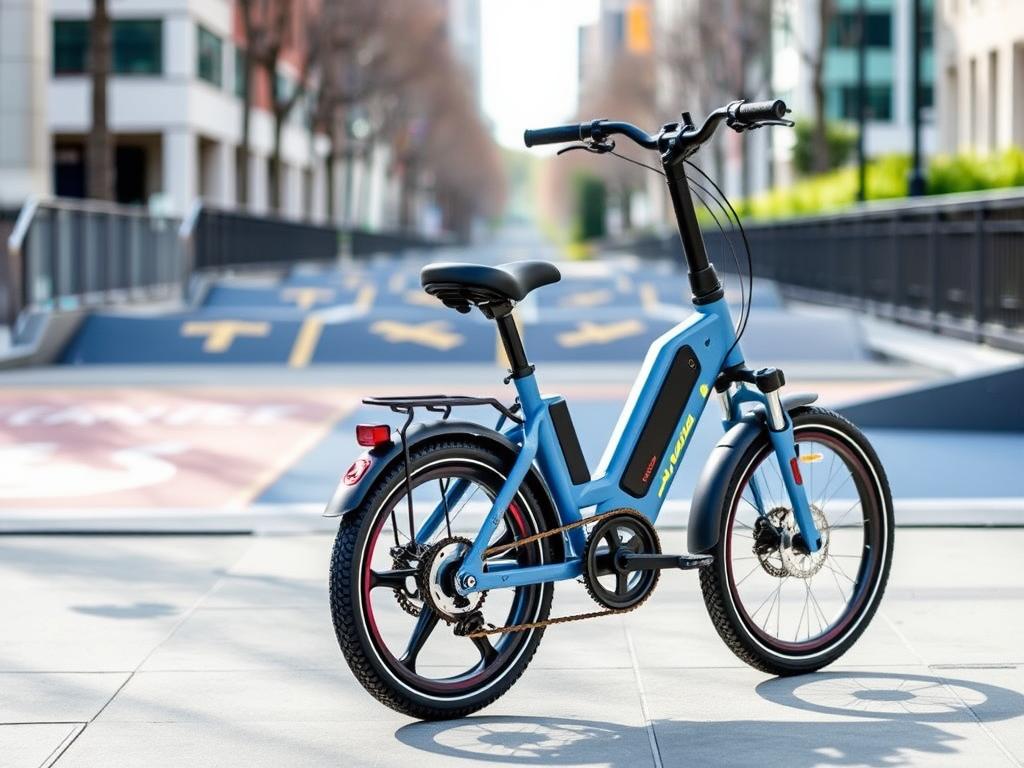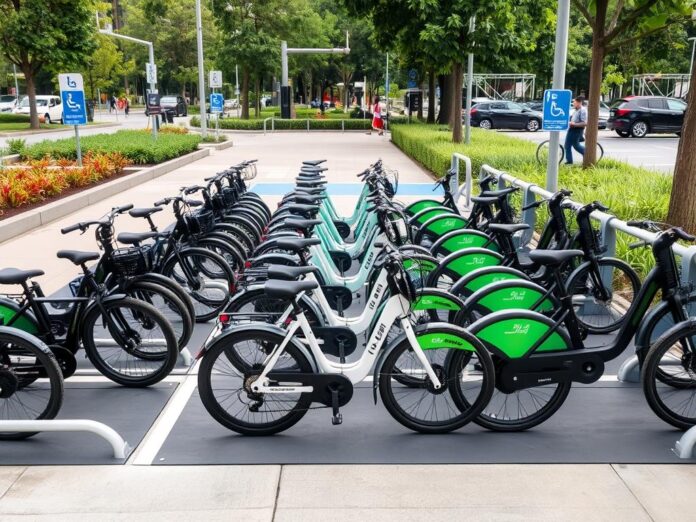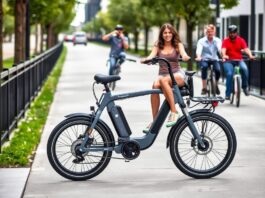The electric bike market is booming in the United States. Sales are hitting new records every year. It’s vital to ensure these bikes are accessible and follow the Americans with Disabilities Act (ADA). The ADA says places must let people with disabilities use power-driven mobility devices, like electric bikes.
This guide will explore ADA compliance for electric bikes. We’ll look at federal rules, state laws, and why inclusivity matters in cycling.
The electric bike world is changing fast. Over 30 states have added e-bikes to their traffic laws. They use a three-class system based on speed and throttle. But, the mix of state rules can confuse riders. This guide will help you understand the legal side of electric bikes. It aims to empower you to make smart choices and push for more cycling access.
Key Takeaways
- The Americans with Disabilities Act (ADA) requires covered entities to allow the use of power-driven mobility devices, including electric bikes, by individuals with disabilities.
- Over 30 states have incorporated electric bikes into their traffic codes, with varying regulations and classification systems.
- State-level e-bike laws often mandate registration, licensing, and helmet requirements, which can differ significantly across jurisdictions.
- The Department of the Interior has issued an order allowing most classes of e-bikes on trails where traditional bicycles are permitted, but implementation varies by location.
- Ensuring ADA compliance for electric bikes is crucial to promote inclusivity, enhance mobility for individuals with disabilities, and contribute to environmentally sustainable transportation options.
Understanding ADA Compliance and Its Importance
The Americans with Disabilities Act (ADA) ensures equal access for people with disabilities. It’s key for electric bikes to be inclusive. Knowing the ADA helps make electric bikes more accessible and green.
What is the ADA?
The ADA was passed in 1990. It’s a law that stops discrimination against people with disabilities. It aims to give them the same rights as everyone else, so they can fully join their communities.
Key Objectives of the ADA
- Ensuring equal access to public facilities, services, and programs
- Promoting employment opportunities and non-discrimination in the workplace
- Requiring reasonable accommodations for individuals with disabilities
- Enhancing accessibility in transportation and communication systems
How Does It Apply to Electric Bikes?
The ADA sees electric bikes as a way for people with disabilities to move around. It says places must let electric bikes in, just like regular bikes. This makes sure everyone can use eco-friendly commuting options.
By following the ADA, makers and sellers of battery-powered vehicles can make electric bikes for everyone. This helps people with disabilities be more independent and involved in their communities.
Key Features of ADA-Compliant Electric Bikes
Urban landscapes can be tough for people with disabilities. But, new urban planning and tech are making things better. Electric bikes, especially, have to meet ADA standards to be accessible.
Accessible Design Elements
ADA-compliant electric bikes have special designs for everyone. They have step-through frames for easy getting on and off. You can also adjust the seat and handlebars to fit you perfectly.
Weight Limits and Adjustability
These bikes can handle more weight, fitting different body types. You can also tweak settings like suspension and pedal help. This makes them more inclusive.
User-Friendly Controls
Controls on these bikes are simple and clear. They have easy-to-read displays and buttons. This makes it safe and easy for anyone to use them.
| ADA Compliance Feature | Benefit |
|---|---|
| Step-through frame | Easier mounting and dismounting for individuals with mobility challenges |
| Adjustable seat and handlebars | Customizable fit for users of different heights and physical abilities |
| Higher weight capacity | Accommodates a wider range of users, including those with larger body types |
| Intuitive controls | Enables safe and confident operation for individuals with various disabilities |

ADA-compliant electric bikes are key in making cities better for everyone. They help people with disabilities move around more easily and freely.
Advantages of ADA-Compliant Electric Bikes
ADA-compliant electric bikes (e-bikes) bring many benefits. They help people with disabilities move around easily. They also make cycling more inclusive and help the environment.
Enhancing Mobility for Individuals with Disabilities
ADA-compliant e-bikes greatly improve mobility for those with disabilities. [https://www.nadtc.org/news/blog/e-bikes-increase-mobility-access-for-older-adults-and-people-with-disabilities/]They have features that make cycling possible for many. This lets people with different abilities ride, travel, and live more freely.
Promotion of Inclusivity in Cycling
ADA-compliant e-bikes make cycling open to everyone. They help create a cycling world that welcomes all. This way, people with disabilities can enjoy cycling, which was once hard or impossible.
Environmental Benefits
ADA-compliant e-bikes are a green way to travel. They cut down on carbon emissions and make our air cleaner. These e-bikes are perfect for those with disabilities and for everyone else. They’re a green choice for our planet.
| Metric | Value |
|---|---|
| Reduction in Tailpipe Emissions | 100% |
| Increase in Cycling Frequency | 70% |
| Cardiovascular Health Benefits | Moderate-to-Vigorous |
ADA-compliant electric bikes offer great benefits. They improve mobility, make cycling inclusive, and help the environment. They’re a great choice for those with disabilities and for anyone looking for a green way to travel.
“E-bikes have the potential to significantly improve the quality of life for people with disabilities by increasing their independence, access to their communities, and overall physical and mental well-being.”
Assessing Your Electric Bike for ADA Compliance
The electric bike market is booming. It’s important to make sure these bikes are accessible and follow the Americans with Disabilities Act (ADA). There are several key points to check when looking at your electric bike for ADA compliance.
Key Compliance Checkpoints
- Design elements: Look at the bike’s frame, handlebars, and controls. Make sure they are easy for people with different disabilities to use.
- Weight limits and adjustability: Check if the bike can handle different weights and sizes. It should fit people of various sizes and mobility levels.
- Control system: See how easy it is to use the bike’s controls. This includes the throttle, brakes, and any extra features.
Resources for Evaluation
To check if your electric bike meets ADA standards, you can use several resources:
- Look at the ADA guidelines for power-driven mobility devices, like electric bikes.
- Check the bike’s specs and accessibility features from the manufacturer.
- Talk to disability groups or organizations focused on accessible transport for advice.
Making Modifications for Compliance
If your electric bike doesn’t meet ADA standards, you can make changes to make it more accessible:
- Make the controls easier to use, like adding bigger buttons or levers.
- Change the frame design or add attachments for different mobility needs.
- Consider replacing or upgrading parts to improve adjustability and weight capacity.
By checking your electric bike’s ADA compliance and making changes, you can make it more accessible. This way, more people can use it, promoting inclusivity and better mobility for everyone.

Regulations and Guidelines for Electric Bikes
Electric bikes (e-bikes) are getting more popular. It’s important to know the rules and guidelines for using them in the United States. Federal laws set a basic framework, but states can add their own rules. This creates a mix of laws across the country.
Overview of Relevant Regulations
The Consumer Product Safety Commission (CPSC) says e-bikes are bikes with pedals, a motor under 750 watts, and a top speed of 20 mph. But, many states use a three-class system. This system splits e-bikes into pedal-assist, throttle-assist, and high-speed types.
Federal vs. State Guidelines
Federal laws are a starting point, but states can add more rules or make e-bikes more accessible. For example, California requires helmets for young riders. Some states let e-bikes on bike paths, while others don’t.
Recent Changes in Legislation
The rules for e-bikes are changing, with new laws aimed at making them more accessible. For instance, a 2022 order lets e-bikes on trails where regular bikes are allowed. As e-bikes become more popular, laws will likely change to balance safety, access, and environmental impact.
“The evolution of e-bike regulations is crucial in ensuring these innovative mobility solutions are accessible and safe for all riders.”
Designing an ADA-Compliant Electric Bike
Creating an electric bike that meets ADA standards is all about putting the user first. It’s about making sure the bike is easy to use for everyone, no matter their mobility needs. Using new assistive tech and planning cities better helps make e-bikes that really help people with disabilities.
Importance of User-Centric Design
At the core of making ADA-compliant e-bikes is knowing what users need. Working with disability groups gives makers a deep understanding of the challenges faced by people with different disabilities. This way, e-bikes are made that are truly easy to use and accessible.
Collaboration with Disability Advocacy Groups
Working with disability groups is key to designing ADA-compliant e-bikes. These groups have a lot of knowledge and personal experiences. They help ensure the e-bikes meet the needs of users with disabilities, making sure everyone can ride easily and safely.
Testing and Feedback from Real Users
The design process doesn’t stop with the first idea. It needs lots of testing and feedback from people with disabilities. By letting users try out the e-bikes, makers can find and fix problems. This makes sure the e-bikes are truly accessible and meet ADA standards.
| Feature | Specification |
|---|---|
| Standover Height | 13.8 inches |
| Motor Output | 1,092 W |
| Top Speed | 14 mph |
| Range | 50 miles per charge |
| Incline Capability | 20-degree hills |
| Price | $1,499 USD |
By focusing on the user, working with disability groups, and listening to feedback, makers can create e-bikes that use assistive technology innovations and support inclusive urban planning. This way, people with disabilities can enjoy the benefits of electric bikes, making cycling more accessible and welcoming for everyone.

The Role of Manufacturers in ADA Compliance
Manufacturers are key in making sure electric bikes are accessible to everyone. They are the ones who make these bikes, so they must follow ADA rules from the start. This makes sure everyone can use these green vehicles.
Best Practices for Manufacturers
Top electric bike makers follow important steps to meet ADA standards. They do this by:
- Testing their bikes with people of all abilities to get feedback.
- Keeping up with ADA rules to make sure their bikes are up to date.
- Working with disability groups and experts to make better bikes.
Examples of Leading Compliant Brands
Some top electric bike brands really focus on ADA compliance. These include:
- Rad Power Bikes – They make bikes with adjustable seats and easy-to-use controls for everyone.
- Charge Bikes – Their e-bikes have adjustable handlebars and power settings for different needs.
- Specialized – They add features like low-step frames and lights to make riding safer and easier.
Commitment to Ongoing Improvement
As technology and needs change, makers must keep improving their bikes. They should update their designs, add new features, and listen to feedback from the disability community. This way, their bikes stay accessible for all.
“Accessibility is not just a box to check, but a fundamental consideration that should be woven into the fabric of product design from the very beginning.”
The Process of Getting an ADA Certification
Getting an ADA certification for electric bikes is key for making them accessible to everyone. This process checks the bike’s design, tests it, and documents its compliance with ADA rules. This ensures the bike is safe, easy to use, and meets accessibility standards.
Steps to Certification
- Design Review: The bike’s design is checked for features like adjustable seats and easy controls. It also looks at the bike’s weight.
- Testing and Evaluation: The bike is tested to see if it follows ADA rules. This includes checking its weight, size, and how well it works.
- Documentation and Submission: All the bike’s details, test results, and proof of compliance are put together. Then, they are sent to the certification authorities.
Costs Involved
The cost to get an ADA certification for electric bikes can change based on the design and needed changes. Things like testing costs, expert advice, and fees add up. But, it’s important to make electric bikes accessible for everyone.
Key Organizations Involved
- The U.S. Access Board: This agency helps make and keep the ADA rules. They guide the certification process.
- Disability Rights Organizations: These groups help make sure the bike meets the needs of people with disabilities. They offer advice and support.
- Accredited Testing Facilities: These places are experts in testing for accessibility. They do the needed tests and give reports.
By going through the ADA certification process, bike makers show they care about making bikes for everyone. This helps more people with disabilities enjoy cycling.
Educating Consumers on ADA Compliance
As more people choose electric bikes for eco-friendly commuting, it’s key to know about ADA rules. These rules are not just laws; they help make cities better for everyone. They ensure that all riders can enjoy the ride safely and happily.
Resources for Further Learning
Want to learn more about ADA rules for electric bikes? There are many resources out there. E-bike makers share info on their websites about their bikes’ features and if they meet ADA standards. Groups that support people with disabilities and government agencies also have lots of helpful guides.
Community Programs Promoting ADA Awareness
- Local bike shops and groups often hold workshops to teach about ADA-compliant e-bikes.
- Events like adaptive cycling clinics and rides let people with disabilities try cycling and learn about options.
- Outreach efforts and campaigns with local governments help spread the word about ADA rules in eco-friendly commuting.
Importance of Advocacy and Outreach
It’s vital to keep talking about ADA rules in the electric bike world. By teaching people, supporting community programs, and pushing for change, we make cities better for everyone. This way, people with disabilities can also enjoy the benefits of green travel.
| Key ADA Compliance Statistics | Value |
|---|---|
| Global e-bike market value (2023) | $40 billion USD |
| E-bike market share of all electric vehicles | 15% |
| Potential reduction in private vehicles in India through e-bike adoption | 40 million |
| Potential reduction in cars in circulation in the United States through e-bike adoption | 8 million |
“Inclusive design is essential in ensuring safe and enjoyable trail experiences for individuals of all ability levels.”
Future Trends in ADA Compliance for Electric Bikes
The e-bike industry is growing fast, and ADA compliance is getting better. New assistive technology will make electric bikes more accessible. This will help riders with disabilities enjoy the ride.
Innovations in Design and Technology
New tech will improve e-bikes a lot. We’ll see better control systems, batteries, and frames. These changes will help riders with mobility issues.
Things like power-assisted steering and adjustable seats will make e-bikes easier to use. Also, lighter and foldable e-bikes will be more common. This will help more people use ADA-compliant electric bikes.
The Role of Policy Changes
Policy changes will also shape the future of e-bikes. New ADA rules and incentives will encourage more people to use ADA-compliant e-bikes. Governments and groups will work together to meet the needs of riders with disabilities.
Prospects for Greater Accessibility in Cycling
The future of e-bikes looks bright for everyone. As more people want inclusive transport, e-bikes will become even more accessible. This means more people can enjoy cycling, thanks to e-bikes.




